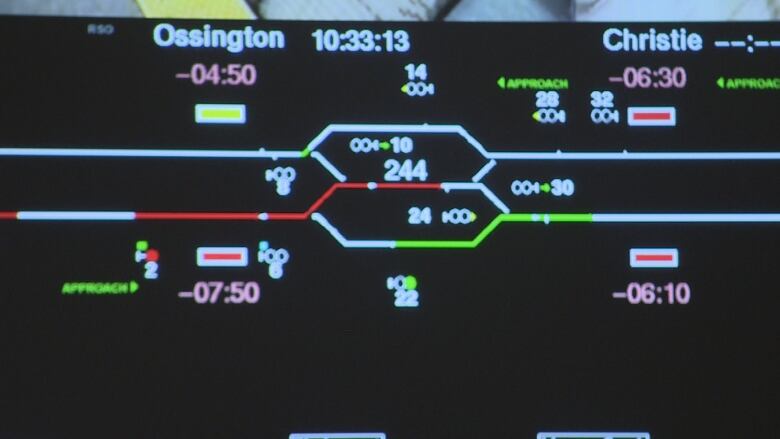Transit control: Where the TTC makes day-to-day decisions affecting your commute
CBC News gives you a behind-the-scenes look at the TTC nerve centre

If you've ever wondered what happens behind the scenes when someone pulls the emergency alarm on a TTC vehicle, or when some other transit delaymakes youlate for work, look no further.
CBC News was invited to visit Transit Control, the nerve centre of the TTC's day-to-day operations.
"On the two major [subway]lines every morning, we try to put a train through every two minutes and 21 seconds in the afternoon and evening rush, we operate a train every 2 minutes and 31 seconds," saidMike Palmer, the TTC's Deputy Chief Operating Officer.
So any problems will put the TTC off schedule.

Issues on the transit systemmedical emergencies, mechanical problems, criminal activity, even complaints and praise of TTC drivers all come through Transit Control, which operates24 hours a day.
"All the time, they're looking for the next thing to go wrong, and to fix it, and when they fix it, they're waiting for the next thing to go wrong," says Palmer.
Many things can go wrong:
Power outage in the subway or streetcars
When senior managers were alerted early Tuesdaymorning about a fire in a cable chamber that knocked out power to most of the subway and streetcar lines in the downtown core, a high-level team held conference calls every half hour.
That teamdecided where to redirect replacement buses to get passengers to their destinations when the subway was supposed to open at 6 am.
"We don't have any spare buses so we have to pull buses off existing routes. At the height of yesterday morning, we had 133 buses running," saidPalmer.
"Because of the magnitude of the incident, we stopped bus maintenance. So buses that were being kept back for maintenance that day, if they were serviceable, they were put back on the road with spare crews."

In situations like Tuesday's massive subway and streetcar shutdown, Palmer says the TTChas an agreement with GO Transit to allow passengers to use their TTC fare to take GO instead.
Bad weather
When there's an impending snowstorm heading toward the city, Palmer saidthe TTC takes certain steps overnight to ensure people get to work on time:
"We store trains in tunnels to keep them warm. We have extra crews on all night clearing switches and train stops. We ran the trains through the night, spraying anti-icing fluid."
He saidstaff at Transit Control keep a close eye on any train delays during operating hours, field calls and send out crews to keep the switches clear and trains free of ice.
If a train isn't moving, Transit Control will call the driverto find out why there's a delay, Palmer said.

Medical emergency
During rush hour, Palmer says paramedics are stationed at key stations. He says there can be as many as eight medical emergencies in a morning:
"Generally people overheating so they wrap up warm to come inside. They get on the train and overheat or they don't have breakfast. So we have to get them off the train, give them medical assistance and try and get the trains moving again," Palmer said.
Fender Benders
If there`s been an accident, a driver is expected to call Transit Control, he said. Someone at central command will call police, fire andparamedics.
It will also dispatch supervisors to divert buses or streetcars around that accident scene and take pictures for the investigation.
Keeping the public informed
Transit Control has a 24 hour social media desk. That person sends out alerts and updates to passengers on Twitter, Facebook and can take over the TV screens on the subway platforms to inform riders about changes or delays.

"She's listening to everyone's conversation in the room and without being told, she will be processing information and putting it out in a way people will understand," saidPalmer.












_(720p).jpg)


 OFFICIAL HD MUSIC VIDEO.jpg)
.jpg)



























































































